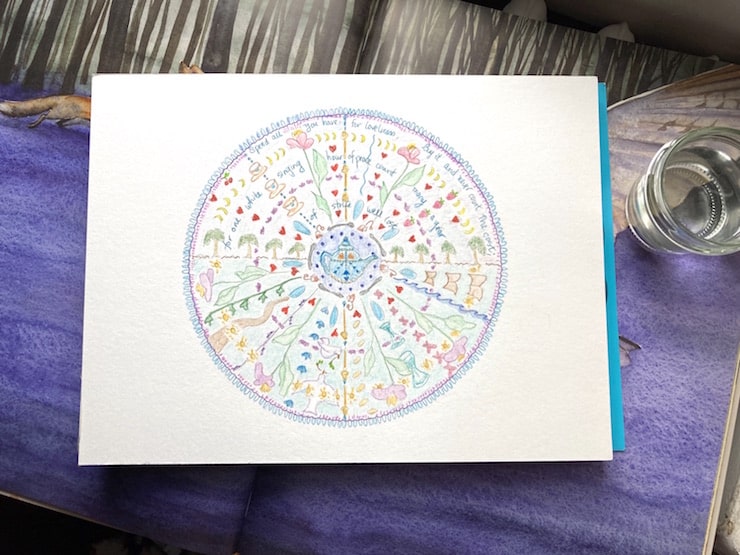
Poetry Mandalas Come to the Club
We’ve been looking for an artful way to memorize poetry lines for the Every Day Poems poetry club. Sure, you can write your lines on a card and try rote memorization. (We’re not opposed.) But you might also like to put your lines into a visual context that you can return to, with the added sense that your lines are like a wish or a prayer that keeps speaking itself into your world.
What you’ll need:
• one to three lines of poetry that feel very centering or guiding for your life
• paper and assorted art supplies like pencils, water color pencils, or markers
• something round to trace
• a protractor (not required but it can be helpful)
Making poetry mandalas are a great pairing for poetry memorization, as they move you deeper into the lines through the exercise of creating images and writing out your text. If you display your mandala where you can see it, you can easily reread and re-experience the lines, to get them deeper into your heart and mind. Overall, by making poetry mandalas, you can find what the best poetry memorization gives you:
• the ability to recall your lines at will
• the tucking away of lines into your soul, where they can impact you even without you consciously calling them to mind
• a deeper sense of poetry’s ways and workings
How to Make Your Poetry Mandala
A mandala can be simple or complex. To start, we’re showing you a more complex version. Traditionally, mandalas have some of the following visual elements with their associated meanings. You can add these elements to your mandala if you like, though it’s not required…
• Dot: everything is one, symbol of the Un-manifested
• Circle: wholeness, integrity, unity
• Horizontal line: Divides up from down, the earth and the sky
• Vertical line: connection between worlds, energy. Divides right and left
• Cross: two lines meet and form a center. Recognition
• Triangle pointed upwards: aspiration, energies in the direction of the spiritual sphere
• Triangle pointed downwards: aspirations towards the earthly, material sphere
5 Basic Steps
1. Begin by drawing a large circle. You can trace an object if it helps (we did!)
2. If you like, divide your large circle top to bottom and side to side. Then divide the resulting “pie” pieces into smaller pie pieces. We used a protractor to help us out
3. Draw a few more circles inside your large circle, at fairly regular intervals, to serve as guide lines
3. Add images that repeat; it’s not necessary to reach for full symmetry
4. Add your poetry lines somewhere along your inside circular guidelines. We used lines from Sara Teasdale’s poem Barter
5. Color your images. (We used Stabilo aquacolor water color pencils, so this was a three-step endeavor: First we colored our images using the pencils. Then we wet the pencil with a water color paint brush to create light washes. Then we went back and added details on top of that, using the color pencils again and some Uniball Vision Needle black ink pens.)
Try It: Make a Poetry Mandala
Choose some lines from an Every Day Poems poem that really touched you and made you want to hold onto the those lines. Work your lines into a mandala. Don’t worry too much about symmetry or symbol this very first time of making a mandala. Play around. 🙂
Featured photo by mark james, Creative Commons, via Unsplash.
See more poetry club activities
- Poetry Club Tea Date ✨ The Turning - September 29, 2025
- Top 10 Dip into Poetry - August 13, 2025
- Poetry Club Tea Date ✨ At the End - August 4, 2025
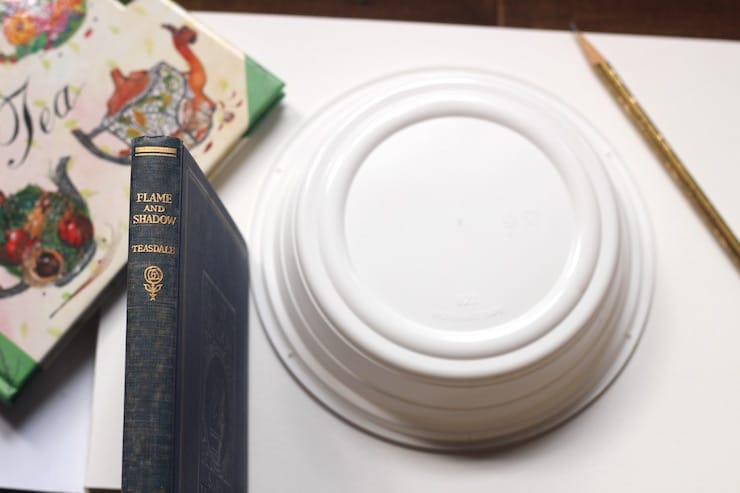
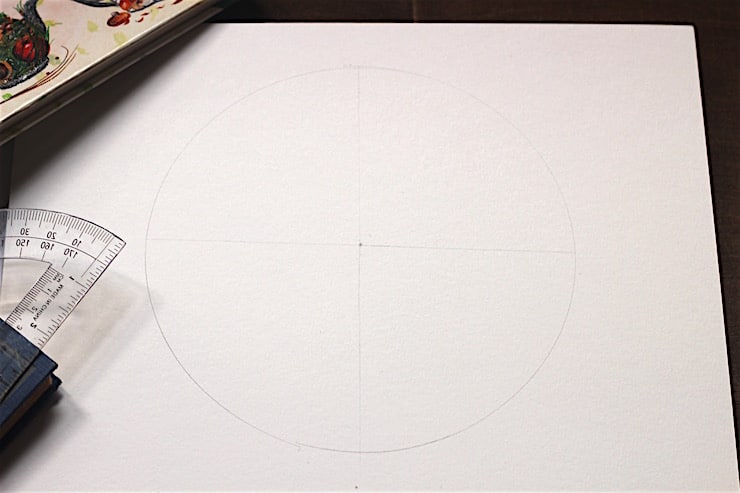
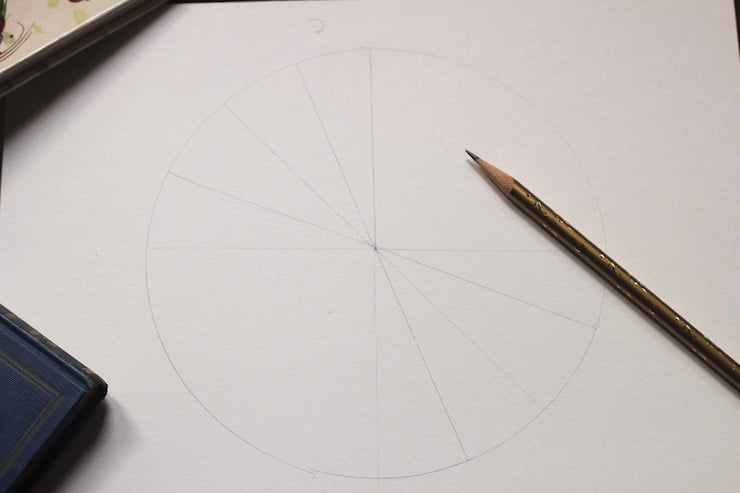

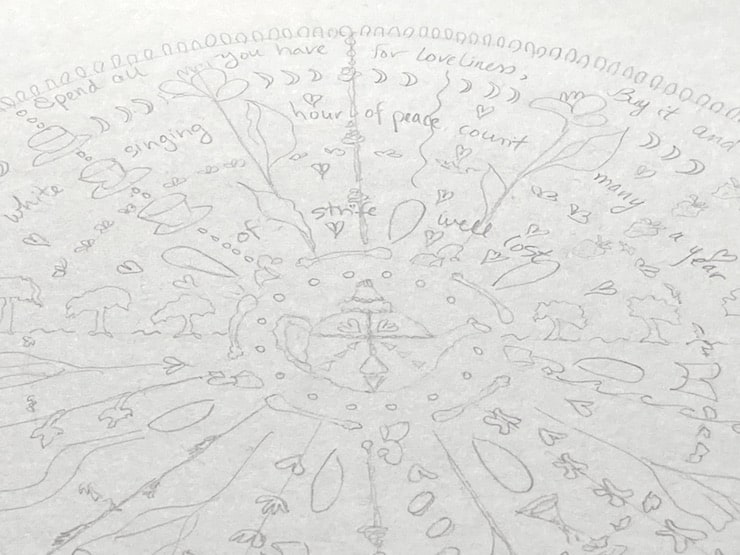
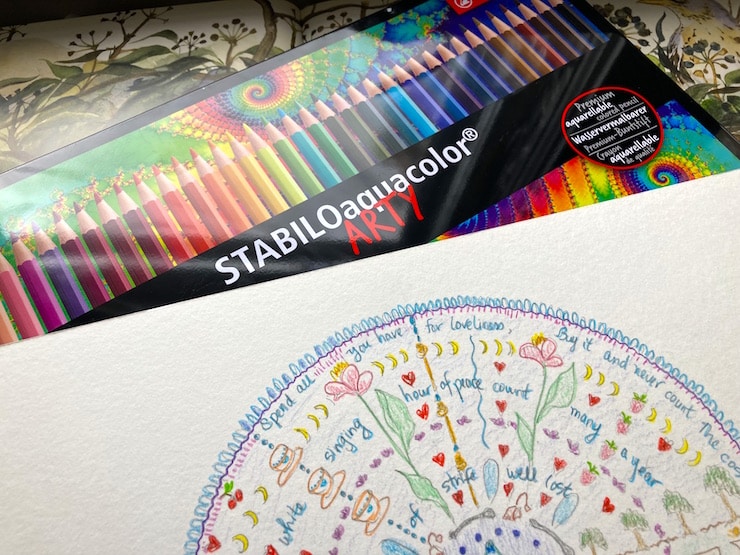
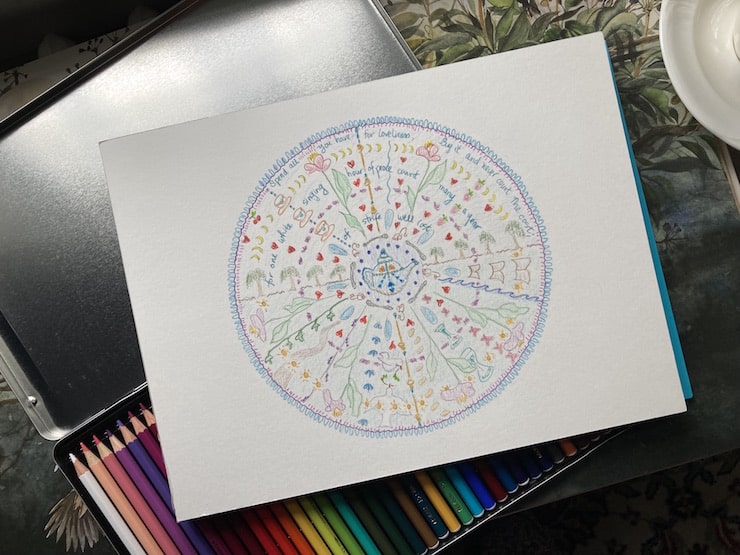
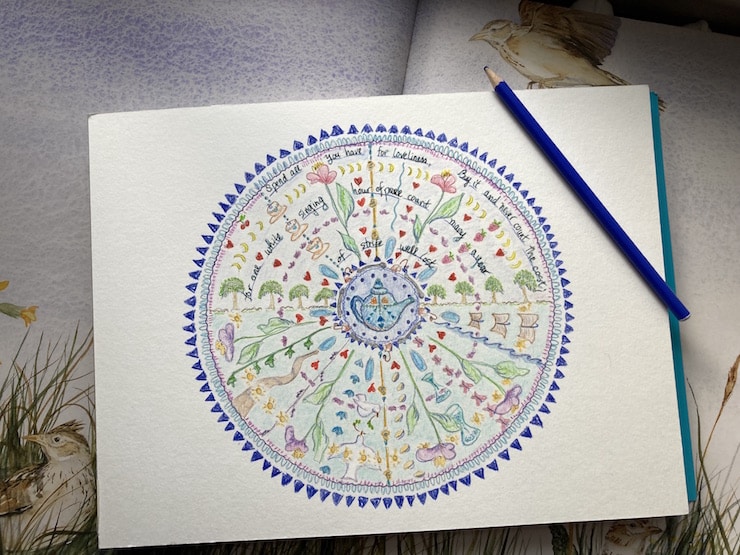
Bethany says
Oh my goodness, how beautiful! Love the intricacies and feeling that each word is adorned here. <3 The tea, the flowers, the love, the dove. Aww… the colors feel charming and peaceful. Makes you want to stay and dwell with the poetry. Fitting for memorization. 🙂
L.L. Barkat says
Thank you so much, Bethany. It was a very meditative experience. And fun to create. 🙂